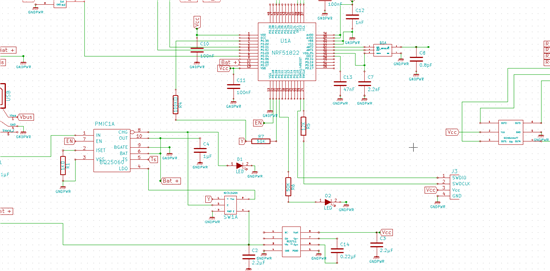Hi all,
In our alpha board, we used the BQ25060 to charge our battery, we know that there are some problems with schematics, but the behavior of the PMIC is surprising and not expected, When we plug a USB cable to power the board LED D1 turns on for a moment and turns off again, then when we measur OUT pin of the PMIC, we find 0V (0.002V), when the USB is just pluged the voltage goes to something like 2.XXX V very quikly and then returns to 0V.
I checked the EN pin the voltage their is between 0.6 and 0.7V which means USB500 mode.
I connected TS to ground no results, and then used the recommended resistors between TS and LDO using the same values of the BQ25060 evaluation kit but still no results.
Could the problem be caused by SW1 ( NXP Analog switch : NX3L1G66) ?
Any idea or help is welcomed, thank you.


